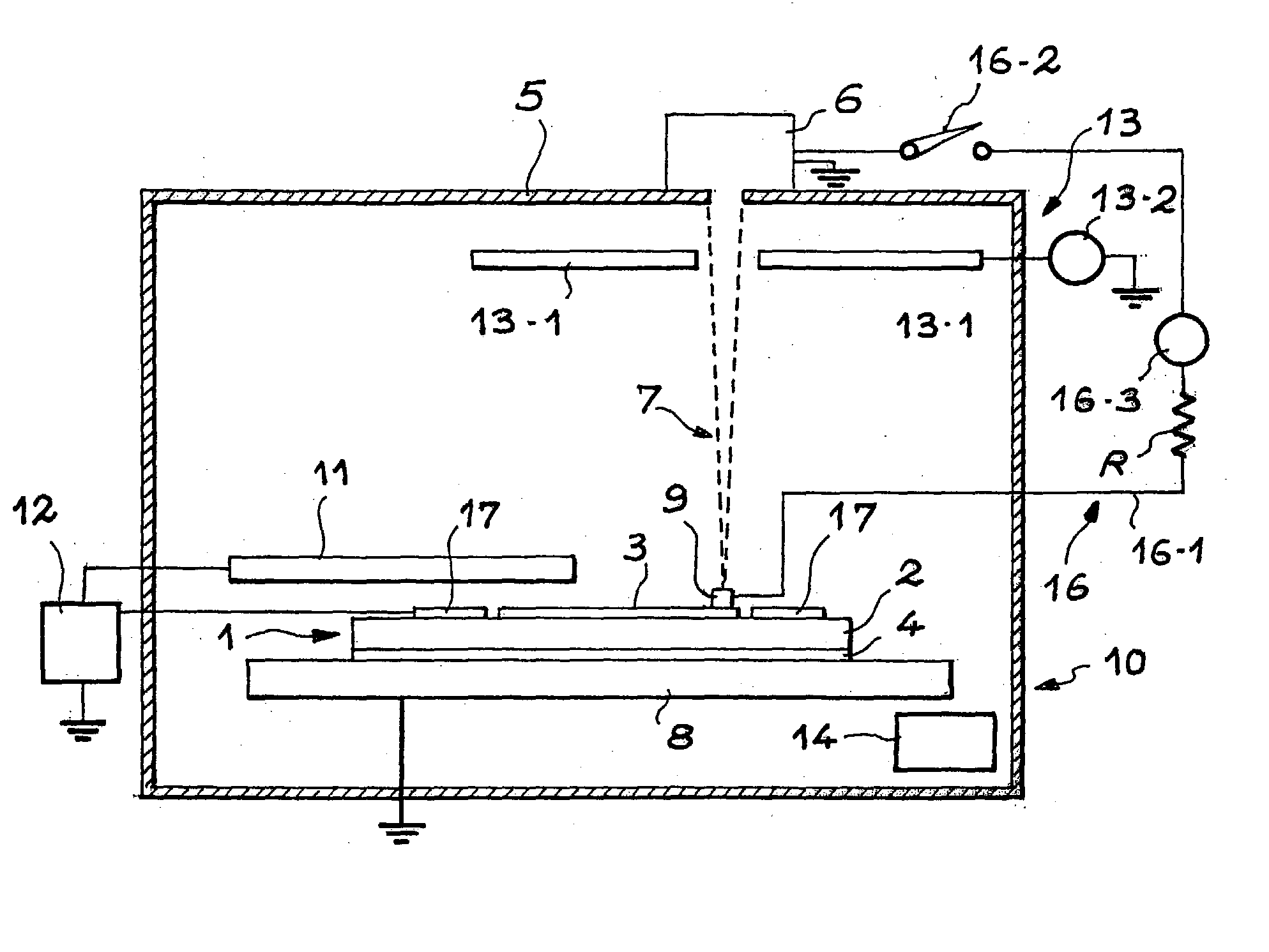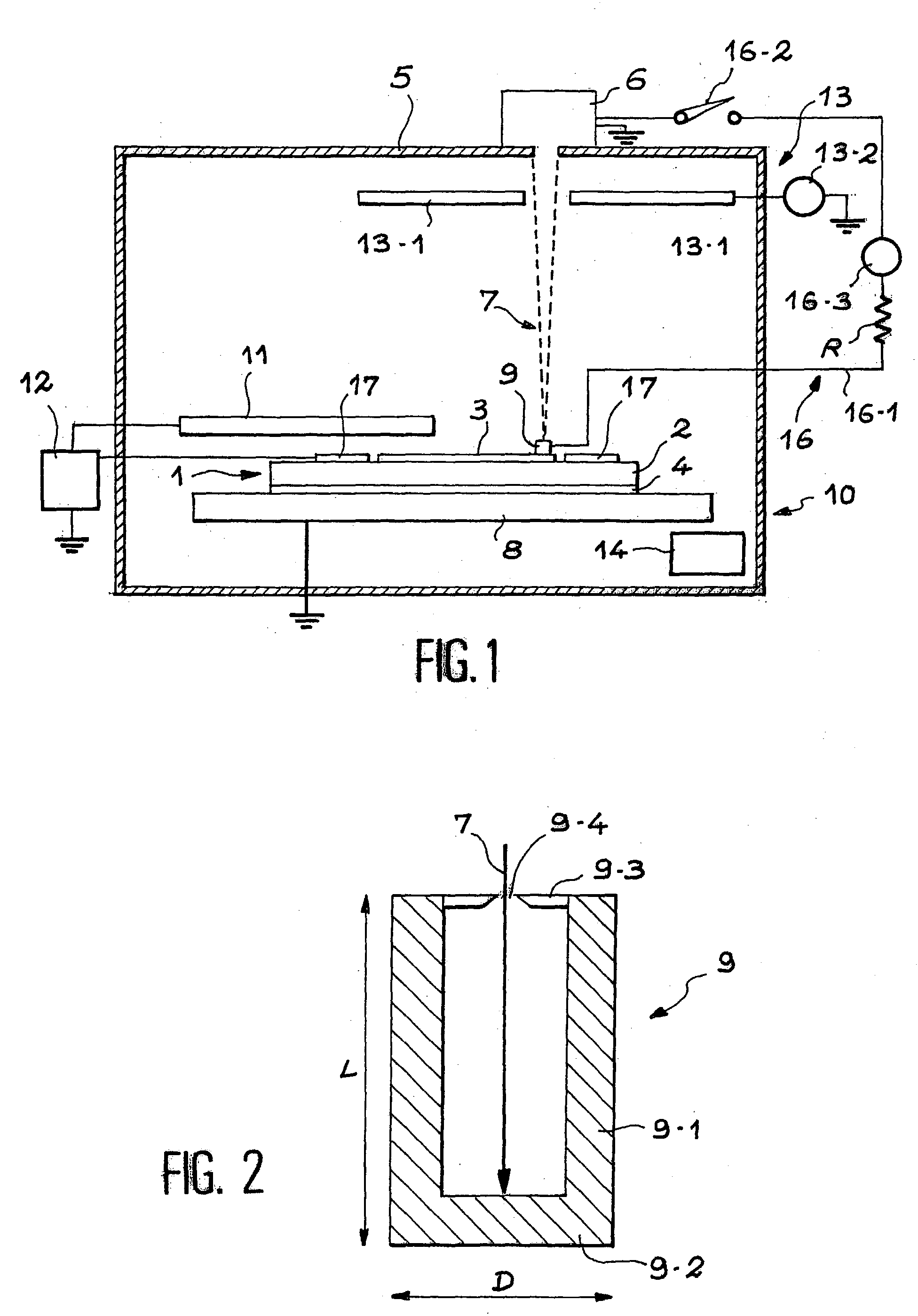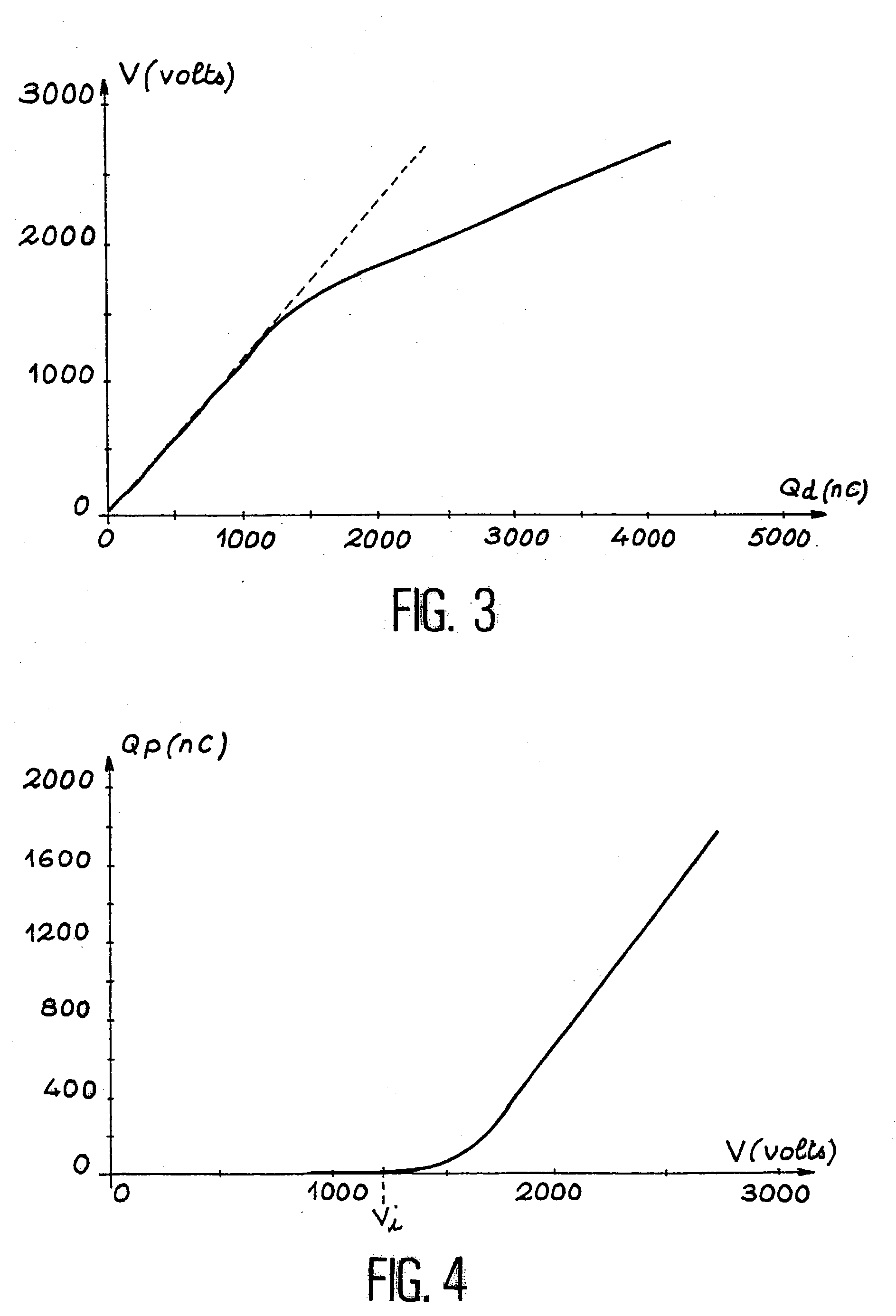Method for charging a structure comprising an insulating body
a charging method and structure technology, applied in the field of charging a structure comprising an insulating body, can solve the problems of difficult control of the nature difficult application of the corona effect, and difficult control of the deposited charge and its distribution
- Summary
- Abstract
- Description
- Claims
- Application Information
AI Technical Summary
Benefits of technology
Problems solved by technology
Method used
Image
Examples
example 1
Charging a Polyethylene Film and Calculating the Static Dielectric Constant and the Injection Field
[0074] A 46 micrometer thick polyethylene film was obtained using pellets put in a mould and hot pressed using an 80 mm diameter conducting plate that will be used as a second electrode. This plate is then put into contact with the sample holder. A Kapton sheet was placed at the bottom of the mould to facilitate separation of the film. The other face of the film was metallized with gold over a 50-millimeter diameter to form the first electrode that will support the Faraday cage. No guard electrode was made. The film thus metallized was placed in a chamber similar to that shown in FIG. 1. The electrons were deposited in 5 nC packets.
[0075] FIG. 3 shows the potential variation V as a function of the quantity of charges Q.sub.d deposited on the first electrode.
[0076] In order to interpret this measurement, it is assumed that the surface of the first electrode is very much greater than the...
example 2
Measurement of the Potential Decay and Calculation of the Mobility of Charges and the Conductivity as a Function of the Field
[0085] We will use a 114-micrometer thick polyethylene film obtained according to the procedure described in example 1. A 1 microCoulomb electron charge was deposited on the first electrode as in example 1. At the end of the injection phase, the charge quantity remaining on the surface of the electrode and the charge quantity lost by conduction during injection, are known perfectly. The potential decay of the first electrode as a function of time is then measured.
[0086] FIG. 5 shows the variation of the potential V as a function of the decay time t. The decay rate dV / dt is usually measured as a function of time, particularly because it can be used to determine the transit time T.sub.t of the injected charge from the first electrode to the second electrode. dV / dt is considered to be constant during the transit, as can be seen in FIG. 6. Beyond T.sub.t, the deca...
example 3
Measurement of the Potential Return
[0100] FIG. 8 shows a representation of the potential return measured on a 120-micrometer polyethylene film obtained according to the process described in example 1. The potential of the structure made using this film was initially raised to 2084 volts using the charging process described in example 1. After a given potential decay time during which the potential of the structure changed to 1565 volts (see example 2), the structure was short circuited so as to eliminate the potential of the top electrode, and then the potential probe was used to measure the new variation of this potential as a function of time.
[0101] Details of the theoretical approach for this potential return phenomenon are described in document {12}. Assuming that the charges are distributed in a plane at an initial depth .lambda., it is proposed to calculate the charge density q and the initial depth of charges .lambda. using the following formulas: 3q = V 0 + V .infin. h { 13 ...
PUM
 Login to View More
Login to View More Abstract
Description
Claims
Application Information
 Login to View More
Login to View More - R&D
- Intellectual Property
- Life Sciences
- Materials
- Tech Scout
- Unparalleled Data Quality
- Higher Quality Content
- 60% Fewer Hallucinations
Browse by: Latest US Patents, China's latest patents, Technical Efficacy Thesaurus, Application Domain, Technology Topic, Popular Technical Reports.
© 2025 PatSnap. All rights reserved.Legal|Privacy policy|Modern Slavery Act Transparency Statement|Sitemap|About US| Contact US: help@patsnap.com



